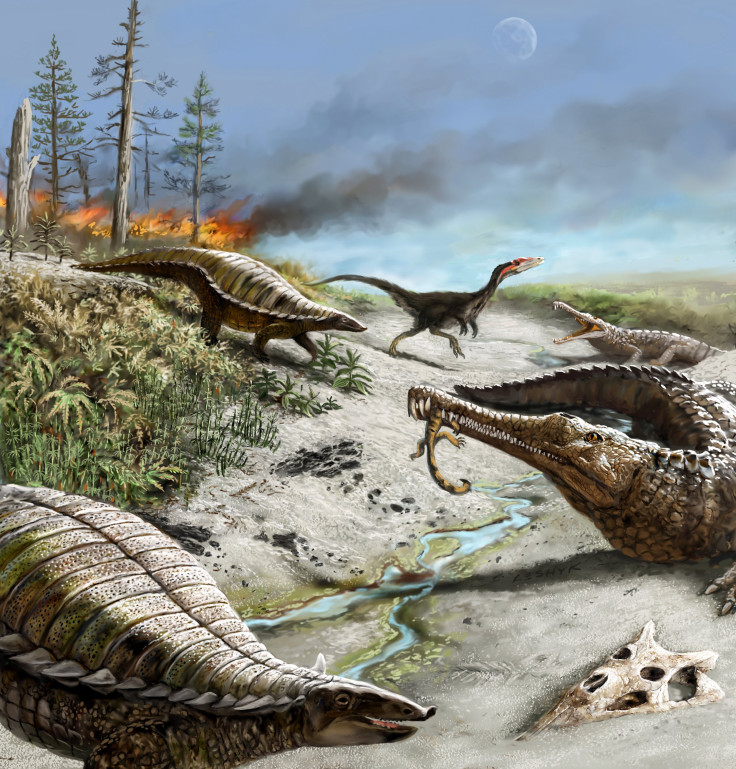Extreme Climate Kept Plant-Eating Dinosaurs Away From Tropics For 30 Million Years

Researchers believe they have finally found an explanation for a longstanding paleontological mystery -- why is there no fossil evidence indicating the presence of large, herbivorous dinosaurs at or near the tropics during the first 30 million years of their existence on Earth? According to a new study, published Monday in the Proceedings of the National Academy of Sciences, the answer is climate change.
Dinosaurs emerged about 230 million years ago in the late Triassic period and flourished during the Jurassic period before going extinct about 66 million years ago. During the early Triassic period, massive, long-necked herbivore dinosaurs roamed the planet, while meat-eating ones were relatively fewer in number. However, fossil evidence gathered from low-altitudes around the equator suggests that the giant long-tailed vegetarian dinosaurs known as sauropods were absent from the region, which has yielded fossil remains of only a few small meat-eating dinosaurs.
“Our data suggest it was not a fun place,” the study's co-author Randall Irmis from the University of Utah said in a statement. “It was a time of climate extremes that went back and forth unpredictably. Large, warm-blooded dinosaurian herbivores weren't able to exist close to the equator -- there was not enough dependable plant food.”
The scientists, working at a site in northern New Mexico, studied rocks from 215 to 205 million years ago, and were successful in recreating the extreme climate prevailing at the time.
Their study paints a picture of the tropics where atmospheric carbon dioxide levels were as high as 2,400 parts per million -- six times the current levels. This resulted in wild fluctuations in the tropical climate -- with extremes of drought and intense heat -- making it extremely hard for plants to exist in the region. These weather conditions resulted in part from high levels of greenhouse gases caused mostly due to volcanic activity in the Triassic period.
“The conditions would have been something similar to the arid western United States today, although there would have been trees and smaller plants near streams and rivers and forests during humid times,” lead author Jessica Whiteside, lecturer at the University of Southampton, said in the statement. “The fluctuating and harsh climate with widespread wild fires meant that only small two-legged carnivorous dinosaurs, such as Coelophysis, could survive.”
The findings of the study assume special importance when seen in the current context, where climate change is putting the planet on course for a whopping 4.7 degrees Fahrenheit rise in global temperatures by the end of the century, according to a recent estimate by the International Energy Agency.
“If we continue along our present course, similar conditions in a high carbon dioxide world may develop, and suppress low-latitude ecosystems,” Irmis said in the statement.
© Copyright IBTimes 2024. All rights reserved.





















